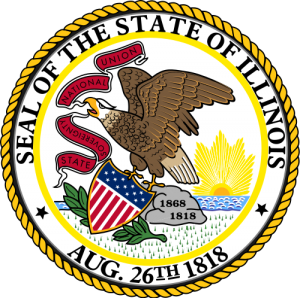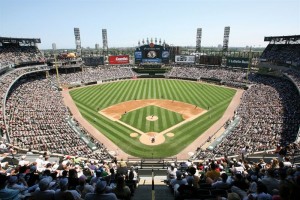 Illinois Population 2013
Illinois Population 2013
Based on estimates and the studies by the United States Census Bureau, the population of Illinois in 2013 is estimated to be 12,875,255, which is the 5th largest population in the United States. This growth displayed a 0.3% increase from the last census taken in 2010. Based on the population and based on the area of the state, the population density of the state is about 232 people per square mile, ranked the 12th largest population density in the United States.
Illinois Population Projections
Based on the historical and current trends of the state, the population is expected to reach about 13.749 million people by the year 2015. This population would be a 6.8% increase from the current population of Illinois. Then, by the year 2020, the population is expected to continue that trend. It is expected to reach 14.316 million people. This would be a 11.2% increase from the current population. Continuing a fairly large increase, the population is expected to reach 14.785 million people by the year 2025, recording a population increase of 14.8% from the current population. Then, by the year 2030, the total population is expected to be about 15.139 million people, which is a 17.6% increase from the current population.
Illinois Land Mass
Illinois measures from its most distant points to be about 210 miles from east to west and 390 miles from north to south. The state also has an approximate area of 57,918 square miles, making it the 25th largest state in the country. About 2,325 square miles of the state are covered by water, compared to the approximate 55,593 square miles covered by land. Charles Mound has the highest elevation point in the entire state of Illinois. It reaches an approximate 1,235 feet above sea level. The lowest point in the state is at the Mississippi River, which reaches 279 feet above sea level. The geographic center of Illinois is located in Chestnut in Logan County, 28 miles northeast of Springfield. Five states border Illinois: Wisconsin, Iowa, Missouri, Indiana, and Kentucky. Lake Michigan borders the state on the east.
Illinois is made up of three distinct geographic land areas: the Central Plains, the Shawnee Plains, and the Gulf Coastal Region. The Central Plains can be broken up into three distinct areas as well: the Great Lakes Plains, the Driftless Plains, and the Till Plains. The Great Lakes Plains tend to be low and flat while lying along Lake Michigan. The Driftless Plains lie in the northwest corner of the state. The highest point in the state is in the Driftless Plains. The Till Plains is part of the Corn Belt, made up of very fertile farmland. This region is the reason that the state is one of the top five corn producers in the country. Altogether, the Central Plains make up 90% of the state. The Shawnee Hills are located to the south of the Central Plains. This area is made up of rivers and valleys. Lastly, the Gulf Coastal Region is the southern tip of Illinois and is characterized by hills that flatten out near Kentucky.
Illinois Demographics
Approximately 50.9% of the state’s 12.875 million people is female, while the other 49.1% of the population is male. Also, those that identify as white (including Hispanic or Latino) make up the largest percentage of the demographics in the state of Illinois. Approximately 78% of the state identify as this race. But, out of that 78%, about 16% do identify as Hispanic or Latino and the other 62% as Caucasian. Those that identify as Black or African American make up 15% of the entire population of the state of Illinois. The rest of the population is made up of those that identify as Asian, American Indian, Alaskan Native, Native Hawaiian, other Pacific Islanders, or those that identify as two or more races. These other races make up about 7% of the Illinois population. The Asian population makes up 5% out of this 7%.
Illinois Religion
The population of Illinois is a slightly more religious population than the average state. About 55% of the state population identifies as religious, compared to the national average of 49%. Out of the 55%, about 29% identify as members of the Catholic Church, making it the largest denomination in the state of Illinois. The next largest denomination in the state of Illinois is the Baptist Church, making up 6% of the population. All the other Christian denominations make up about 16.2% of the population. Those who identify as Jewish, Islamic, or Eastern religions only make up 3.8% of the population. The Islamic population makes up 2.8% of the total of the state, which is a population over triple the normal Islamic population in the country.
Magnificent Stuff in Illinois
 Illinois Sports
Illinois Sports
The state of Illinois has teams represented in all of the major professional sports: baseball, basketball, football, hockey, and soccer. The state has two teams represented in Major League Baseball, both based out of Chicago. The Chicago Cubs play on Wrigley Field, which has an estimated attendance capacity of 41,159. The Chicago White Sox play on U.S. Cellular Field, which estimates an attendance capacity of 40,615. The state only has one team in the National Basketball Association: Chicago Bulls. The Bulls play in the United Center, which has an estimated capacity of 20,917 people. The state has only one team represented in the National Football League. The Chicago Bears play at Soldier Field. Soldier Field has a capacity of 61,500 people. Illinois’s team represented in the National Hockey League is the Chicago Blackhawks, the 2013 Stanley Cup Champions. The Blackhawks play in the United Center, which has a capacity of 19,717 fans. Lastly, the Chicago Fire represents the state in the Major League Soccer. The Fire plays in Toyota Park.
Other Resources
Check out these resources about Illinois and the population demographics.


